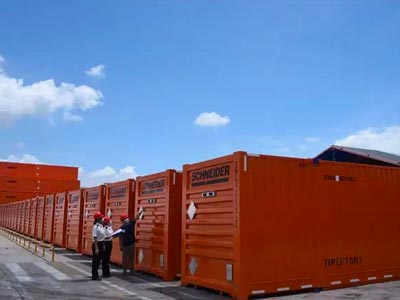The container registry is full of waiting people. The price increase of 20000 yuan can not grab a container. Some shipping routes have increased nearly 10 times, and it is still "hard to get a container". In 2020 and 2021, foreign traders are really miserable.
Domestic ports are "thirsty for containers", while foreign trade enterprises are "hard to find a container"
Nearly a year after the unsealing of Europe and the United States, the shortage of containers has intensified. However, in the ports of export destination countries such as Europe and the United States, empty containers are piled up, and tens of thousands of empty containers are hit by wind and rain.
Many people think that this is the reason for the rapid growth of China's exports and the epidemic prevention policy. However, in the past year and a half, the new containers have already exceeded the new export demand. Why is there still such a shortage? As an exporter, why are containers in Southeast Asian countries not so tight?
In the first half of 2020, the price of a 20 foot small box was US $1600, and now the highest price has risen to US $3600, while the price of a popular 40 foot box has risen to US $5950. The price has doubled and reached a record high. Since the third quarter of last year, the phenomenon of lack of containers and less containers has spread in major ports. According to several media reports, some scalpers take the opportunity to start pricing, and some routes may not be able to grab a container by raising the price by 3000 US dollars.
Different from the domestic "one container is hard to find", the Auckland port in New Zealand has a serious backlog of empty containers. Since the second half of 2020, in order to store those empty containers that cannot be transported away, they have successively found five new storage yards, with nearly 6000 empty containers stranded in Auckland at most.
Is there a shortage of domestic containers due to the sharp increase in exports?
As for the extreme shortage of containers, some experts believe that: with the global economic recovery, the trade demand of various countries has increased greatly. Due to the effective control of the epidemic in China, China's manufacturing industry bears an important responsibility in the global industrial chain. At the same time, the epidemic has led to a large number of crew members being grounded at home, which is also one of the reasons for the poor freight transportation.
Although it is true that made in China has outstripped others during the epidemic, why is the problem of container shortage still unsolved in 2021?
Data show that in the first four months of this year, China's total import and export value of trade goods increased by 28.5% over the same period of 2020 and 21.8% over the same period of 2019. However, according to the Chinese customs data, the number of Chinese container exports from January to December 2019 was 2.42 million, down 29% from 2018. From this, it can be inferred that even if China's centralized container production plants completely cease production, the container stock in 2018 will be sufficient for 2020.
However, CIMC alone can produce 5million more centralized containers a year. Let's take a look at the speech made by Mai Boliang, chairman of CIMC group, to CCTV reporters: there are more than 40 million containers operating worldwide. We produce 400000 containers a month, and 5million containers that year
CIMC alone has more than twice the total number of containers exported in China in 2018. How can there be a shortage of containers?
The only explanation is that the number of containers imported by China has decreased dramatically!
Why did the number of imported containers decrease dramatically?
On the one hand, the number of containers imported by China is likely to shrink in 2020 due to the heavy pressure from housing loans, car loans, elderly care, medical care and education, and the reduction of residents' income caused by the epidemic.
On the other hand, China banned the import of foreign waste, resulting in the closure of a rather important container balancing channel.
It is reasonable to say that China, which makes more than 96% of the world's dry cargo containers and 100% of the reefer containers, is a complete monopoly producer of containers in the world. Although India and Vietnam are also net exporters, they are basically unable to produce containers. Therefore, it should be Vietnam, India and Southeast Asian countries that are more out of stock.
However, in fact, this is not the case. Vietnam and India import a large amount of foreign garbage from the United States and the European Union, process these valuable resources into plastic masterbatches and waste pulp boards, and export them to China to earn a large amount of foreign exchange. In this way, Vietnam and India not only made up for the imbalance that export containers far exceeded import containers, but also made a profit from China.
The problem of unbalanced import and export of containers is even more acute in China. As China is the world's largest exporter, and the imported goods are mostly bulk goods such as iron ore, coal, corn and soybeans, the number of exported containers is more than that of imported containers. In the past, China has always relied on the import of foreign waste and other resource raw materials to maintain this balance. However, from 2021, after four years of decline year by year, China's import of foreign waste has completely returned to zero.
This is the main reason for the sharp shortage of containers in China.
Looking for a new balance point that can replace the import of foreign waste
On july18,2017, for the sake of environmental protection, China announced a ban on the import of foreign garbage. After four years of decline, China has completely blocked the import of foreign garbage such as waste paper and plastics, but it has also directly led to the shortage of containers, and even seriously affected China's export trade.
How much impact will the ban on the import of foreign garbage have on the shortage of containers? Bao Xiaobian provides you with a set of data:
In 2016, China imported 28.5 million tons of waste paper and 7.3 million tons of waste plastics, plus 38.21 million tons of scrap steel. Among them, about 45% of the waste paper and waste plastics imported from the United States are 16.1 million tons. According to the 45 inch cabinet, one container can only contain 40 tons of waste paper, and the number of empty containers transported back through the import of waste paper from the United States is as high as 400000 every year.
However, it is the decrease of 400000 imported containers each year that directly leads to the difficulty in obtaining one container for export to the United States. Although CIMC has increased its monthly supply from more than 200000 cases to more than 400000 cases. However, after being exported to the other side of the ocean, they can only stop at the storage yard to bask in the sun and wait for rust.
Therefore, just working overtime to produce containers is far from solving the problem of China's container import and export imbalance. Instead, a new balance channel should be found.

















